
- 0203 903 7866
The Portland Hospital for Women and Children,
205-209 Great Portland Street, London W1W 5AH - Request Appointment
 GP Referral
GP Referral

There has been a great deal of controversy about the potential side effects of MMR vaccine and some parents are still reluctant to have their child vaccinated. The consensus view of the medical profession is that the benefits MMR vaccine far outweigh any potentially rare side effects. If you are worried about MMR vaccination for your child's then speak to a paediatrician specialist. As the saying goes, "prevention better than a cure".
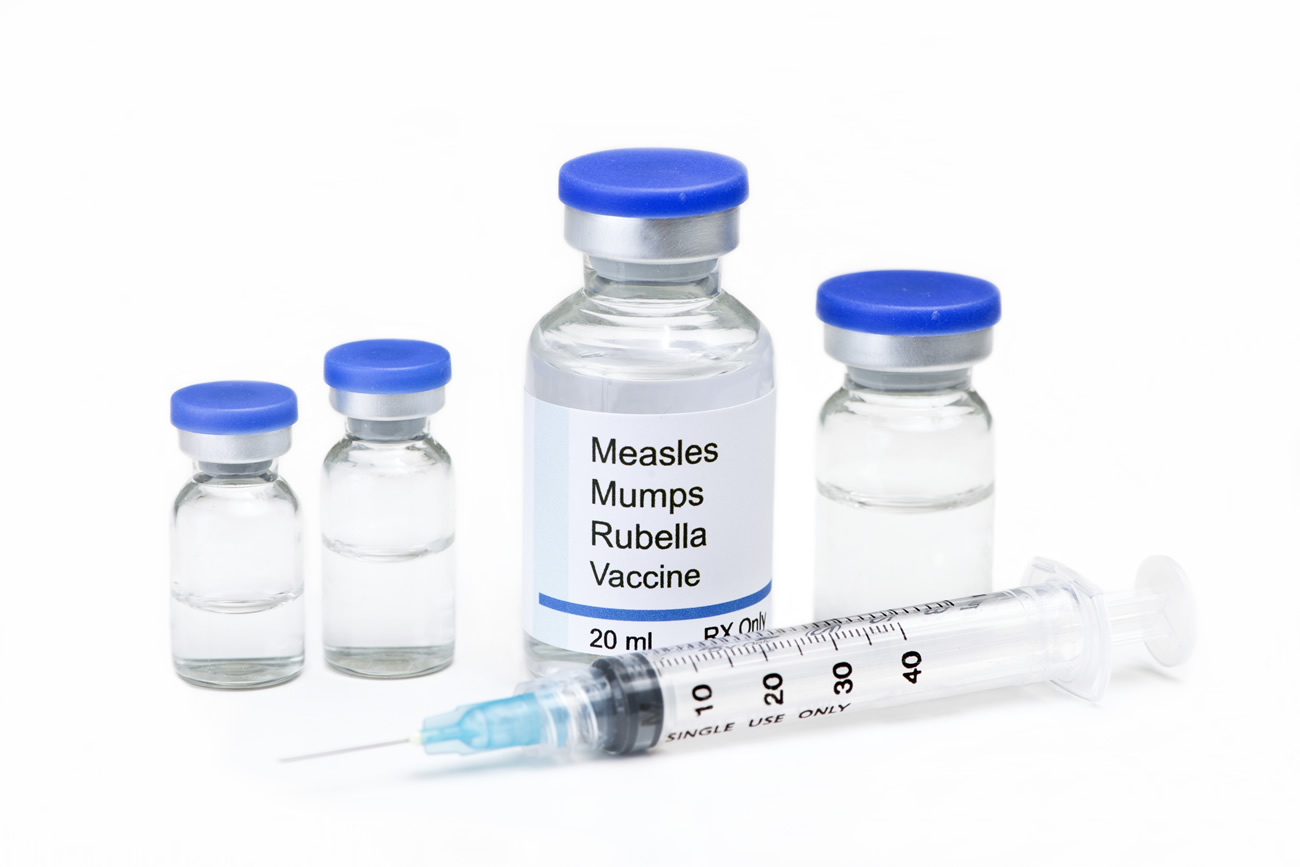
Most children in the UK will catch chickenpox at some point as the NHS does not routinely provide a vaccine. Chickenpox is usually a mild infection that lasts for about a week. It is easy to recognize because it causes itchy, red spots as well as flu-like symptoms. It is important to relieve the itchiness and prevent your child from scratching as much as possible, as the spots could get infected or leave a scar if they are disturbed too much. Calamine lotion or a cooling gel can help. It is also important to keep your child at home to prevent the chickenpox spreading further.
You should seek medical advice if you aren't sure whether the spots are caused by chickenpox. You should also see a doctor if a baby under four weeks is infected or if you develop chickenpox as an adult. You should also seek advice if you are breastfeeding, pregnant, or you have a weakened immune system and you've been exposed to chickenpox. Chickenpox can be more serious in adults, but most children will recover quickly. If your child's symptoms haven't started to improve after six days, you should see a doctor. You should also get help if your child has very severe symptoms or complications such as swelling, breathing difficulties, or dehydration. You can have your child vaccinated against chicken pox in a private clinic.
Measles is no longer common in the UK as we have a very effective vaccination programme, but some children do still catch measles. It is most likely to occur in younger children who haven't completed the full course of vaccination. Measles can cause a high fever, cold-like symptoms, and sore, red eyes. It can also be diagnosed by the small, grey or white spots that form on the insides of the cheeks and the blotchy, red rash that appears on the skin. The infection usually lasts for about a week to 10 days.
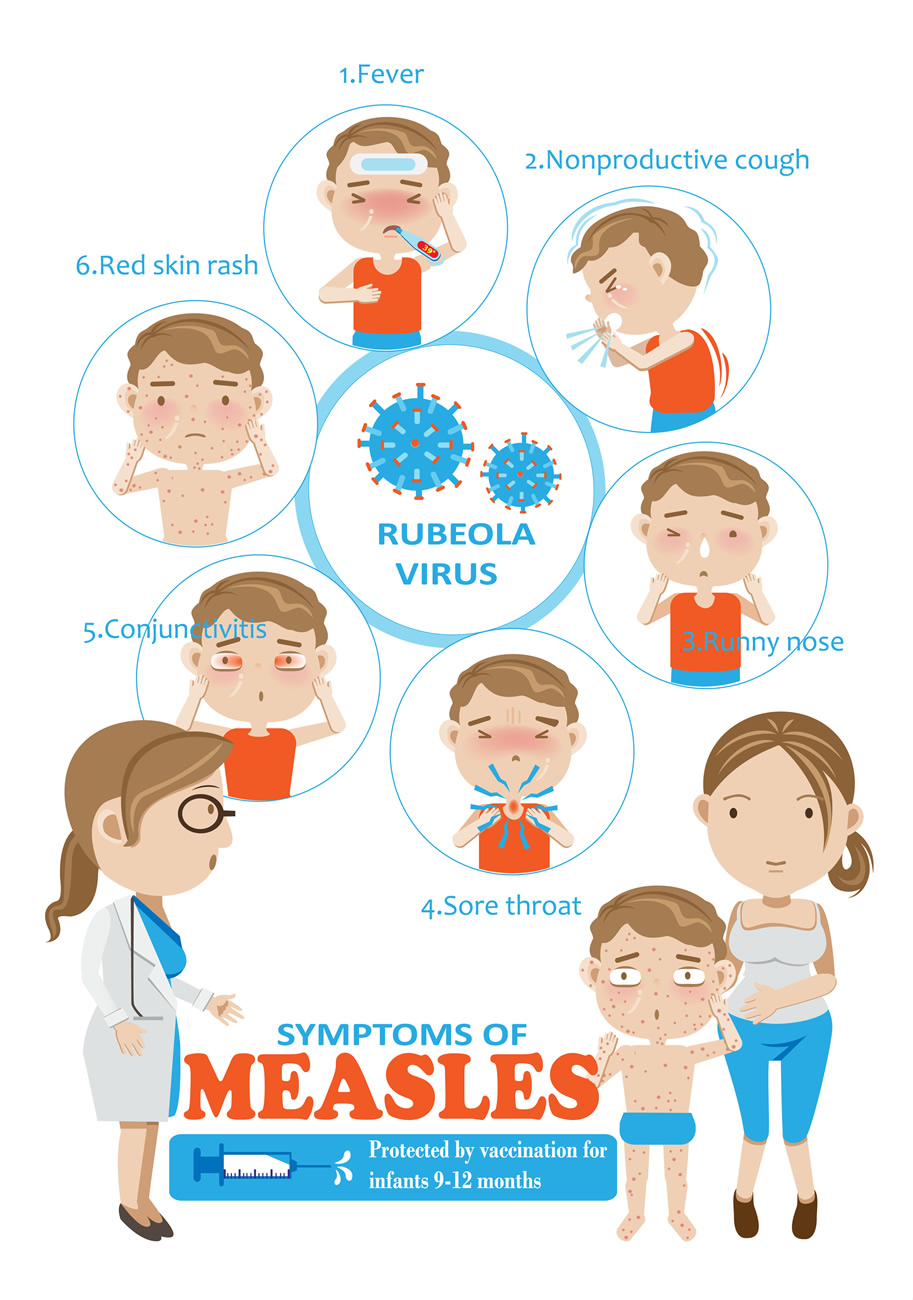
You should see a doctor right away if you think that your child might have measles. It is very important to stop measles from spreading any further, so you should limit contact with other people, particularly those who are most vulnerable to infection. You should be able to treat measles at home, with your doctor's support. However, there are potentially serious complications such as pneumonia and encephalitis that may require hospital treatment if they occur. These complications are rare, but they are potentially life threatening, so it is important to seek medical advice if you suspect measles. You can also see a doctor for measles vaccination at any age if there is an outbreak in your area.
Rubella or German measles is a generally mild infection that is now very rare in the UK because of vaccination. Rubella usually causes a high fever, swollen glands, and cold-like symptoms such as a cough and runny nose. It can cause aching joints, but this is more common in adults than children. A particularly distinctive symptoms is the rash of small, reddish spots. Most of the symptoms go away in just a few days, but the glands can remain swollen for weeks.

Although rubella is usually mild, it can cause serious complications if you are infected while you are pregnant. You should consult your doctor right away if you are exposed to rubella during pregnancy. It is also important to seek medical advice if you think your child might have rubella and to take steps to prevent the infection from spreading further. You should be able to manage the symptoms of rubella at home, but it is always best to get medical advice when your child has a rash with a fever, so that you can be sure of the diagnosis. You should also check that everyone who has been exposed to the infection has been fully vaccinated against rubella.
Mumps is one of the most recognizable childhood infections, because it causes characteristic swelling of the glands at the side of the face. Mumps can also cause a fever, headache, aching joints, and other flu-like symptoms, which often appear a few days before the glands begin to swell. The symptoms will usually pass in a week or two, but they can be very uncomfortable and there is a very small risk of more serious complications, including viral meningitis.
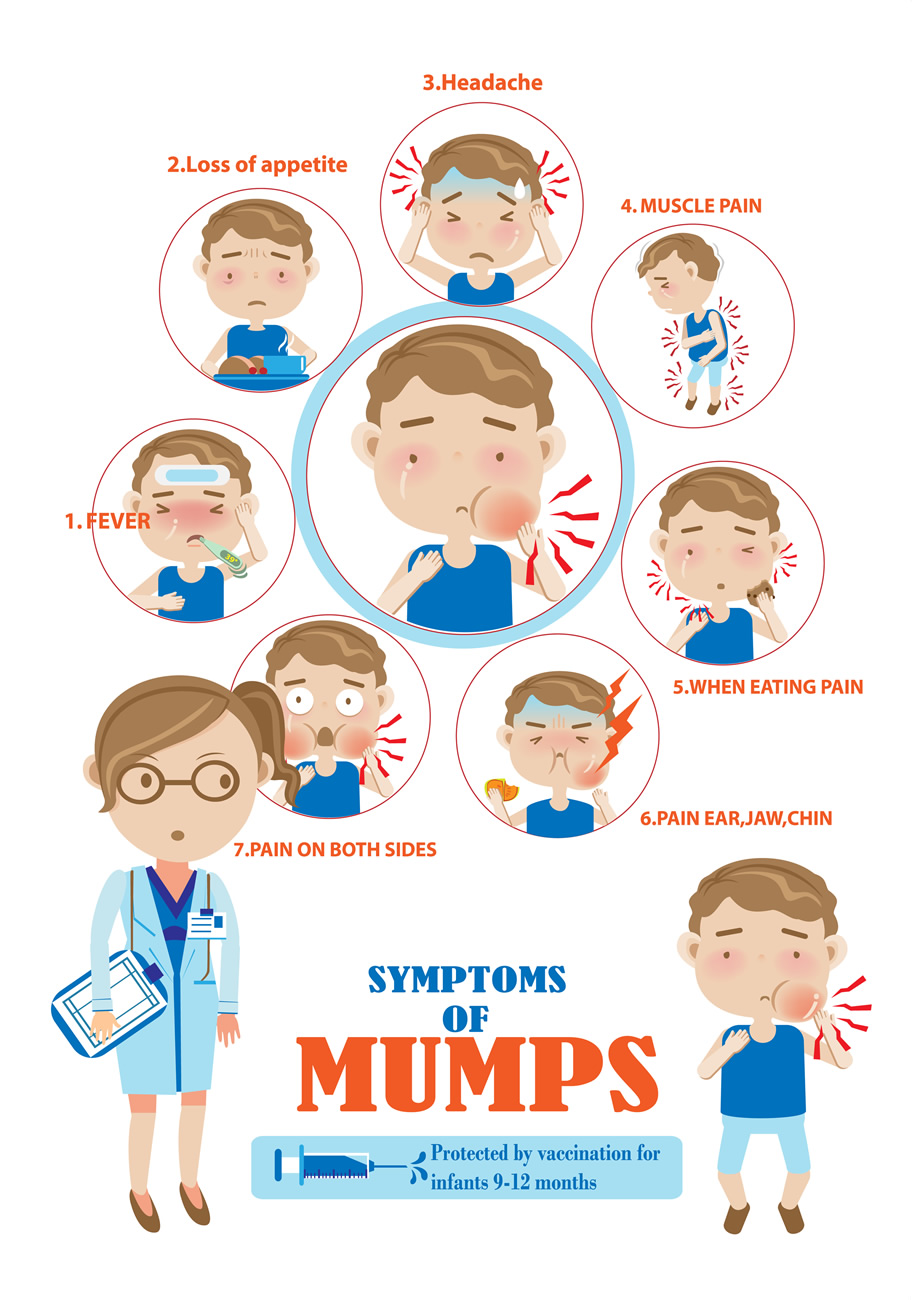
You should consult a doctor if you think that your child might have mumps. The doctor will be able to confirm the mumps diagnosis and advise on treatment. You should be able to manage the symptoms at home, with painkillers, plenty of water to drink, and warm or cool compresses to relieve the swelling. It is important to prevent the infection from spreading further, particularly to any older children or adults who haven’t had mumps or been fully vaccinated against it. Mumps is usually mild in young children, but it can cause complications such as infertility in people who have been through puberty. Anyone born between 1980 and 1990 is particularly at risk as they may not have received the MMR vaccine in childhood.
Scarlet fever is a highly contagious bacterial infection that can spread quickly around schools or nurseries. The most recognisable symptoms of scarlet fever is a pink or red rash that makes the skin feel rough, a bit like sandpaper. The rash isn't always visible on darker skin, but you should still be able to feel the change in texture. Scarlet fever can also cause a high temperature, sore throat, headache, and a swollen tongue. These symptoms often develop a day or two before the rash appears, and they often follow another throat or skin infection.
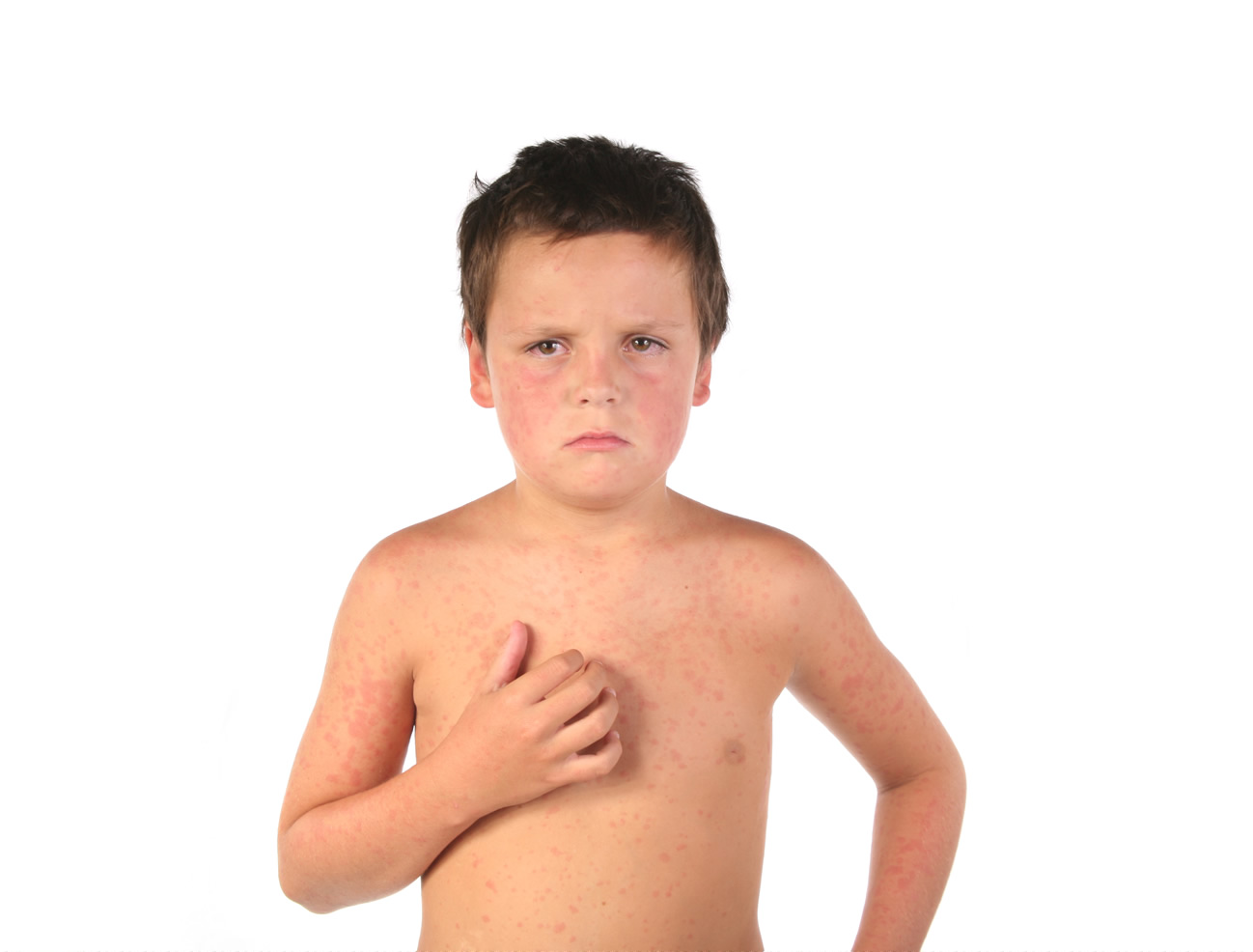
Unlike many other childhood infections, scarlet fever is caused by a bacterial infection rather than a virus. This means that it is possible to treat scarlet fever with antibiotics. You should see a doctor right away if you suspect that your child has scarlet fever. Once the diagnosis has been confirmed, your child can begin the antibiotic treatment, which should help to clear the infection and prevent it spreading. Children with scarlet fever will usually be prescribed a liquid antibiotic to take for ten days. It is important to keep taking the medication even after the symptoms have cleared up, which can happen in just four or five days.
Hand, foot and mouth disease is a common infection that is most often seen in younger children, although it can affect people at any age. The symptoms of hand, foot and mouth disease usually begin with a fever, loss of appetite, coughing, sore throat, and abdominal pain. It can also make children feel generally listless and unwell. Some more specific symptoms will then develop within a couple of days. Red spots will appear on the tongue and in the mouth, which develop into painful, yellowish mouth ulcers with red edges. A rash of small, raised, red spots or blisters will then appear on the skin, usually on the hands, feet, or buttocks. The symptoms will usually clear up in about a week to 10 days.
You should consult a doctor if you are unsure what is causing the symptoms, if they are very severe or if they haven't gotten better after about a week. If the diagnosis of hand, foot and mouth disease is confirmed, you should be able to manage the symptoms at home, as you would the flu. Gargling with warm, salty water or using a mouth gel can help with the ulcers. You should also take steps to prevent the infection from spreading.
Whooping cough or pertussis is a highly contagious lung infection that can cause a very distinctive sounding cough. The symptoms of whooping cough are very similar to a normal cold, and may include a runny nose, sore throat, watery eyes and a slight fever. The cough usually appears about a week later. Your child may cough for several minutes at a time, often bringing up thick mucus. You may hear the characteristic whooping sound as your child breathes in between coughing fits, but this doesn't always happen. The cough can be so severe that it makes your child throw up, bursts some small blood vessels under the skin, or even causes young children to turn blue for a few moments at the end of a long coughing fit. You should seek urgent care if your child is having trouble breathing.
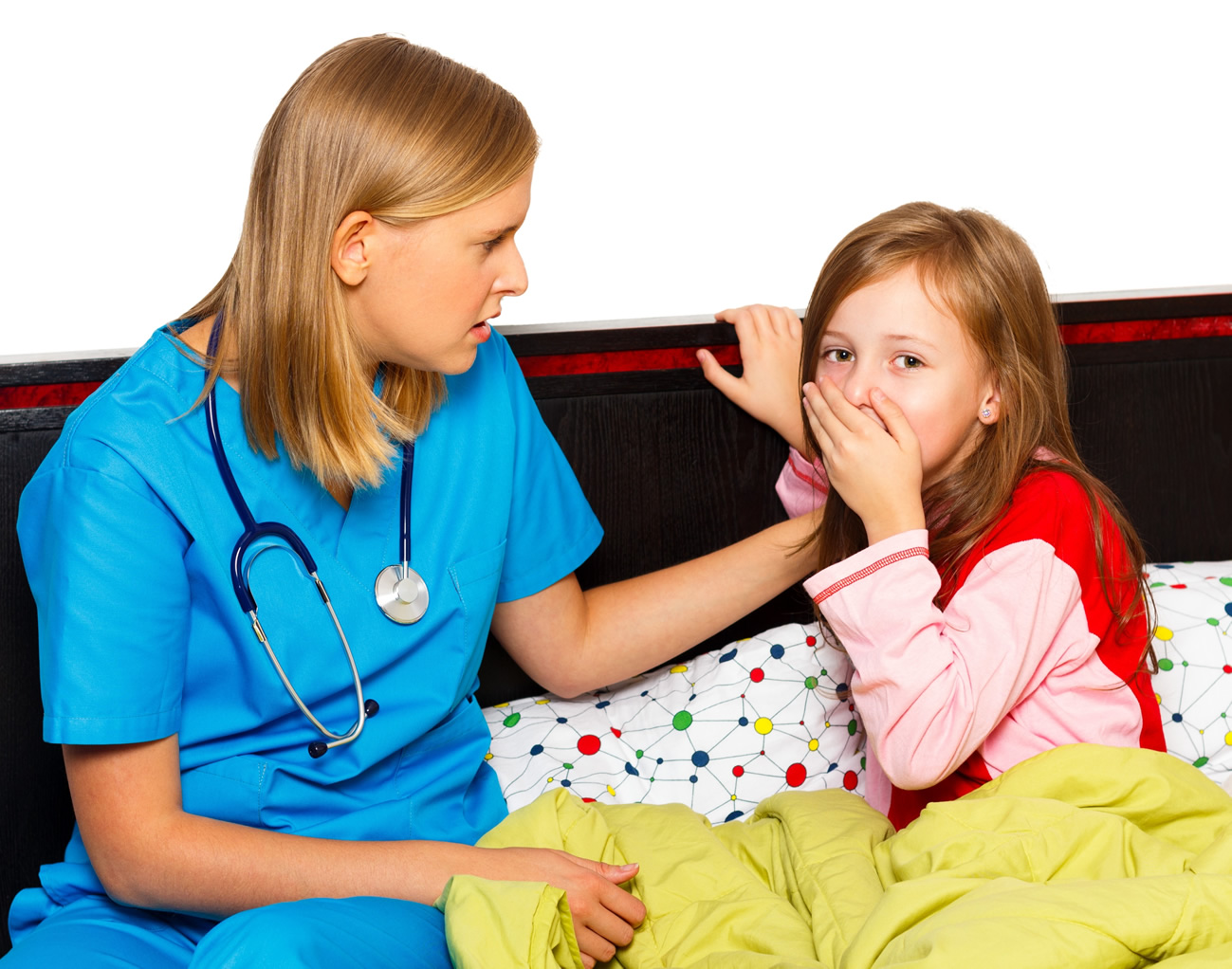
Whooping cough can be very frightening and it is important to seek medical attention if you think your child is affected. Whooping cough is a bacterial infection, so a course of antibiotics can be prescribed if it is caught early. If the infection is very severe, there are complications, or your child is under six months, additional treatment may be needed in hospital.
Diarrhoea and vomiting are very common symptoms of infection in children. Young children can sometimes experience these symptoms even when the same infection doesn't cause them in adults. It's important to be particularly careful about hand washing and food hygiene when an infection causes diarrhoea or vomiting, in order to prevent it from spreading.
Diarrhoea and vomiting can usually be treated at home, but it is particularly important to keep young children and babies well hydrated. Babies should be offered plenty of milk. Bottle fed babies can take water in between formula feeds, while older children should be encouraged to drink more often. Small amounts of oral rehydration solution can help, but make sure you follow your pharmacist or doctor's advice when giving ORS to babies or young children. If you notice signs of dehydration, such as infrequent or dark urine, dry mouth, sunken eyes or a sunken soft spot in babies, you should seek medical advice.
You should also see a doctor if your child has been throwing up for more than a couple of days or if diarrhoea lasts more than a week. If the symptoms are very severe, your child has a high fever or serious abdominal pain, there is green bile in the vomit or blood in the diarrhoea, you should seek urgent medical care.
Influenza or the flu is one of the most common childhood infections. The symptoms typically include a fever, headache, aches and pains, and a cough. Your child might also have a runny nose, sore throat, or diarrhoea and vomiting. Flu can be very unpleasant. One of the best ways to tell the difference between influenza and the common cold is that when your child has the flu, he or she won't want to get out of bed. The symptoms will usually appear more suddenly, be more severe, and last longer than a cold too. However, flu symptoms should still go away in about a week.
You should be able to manage childhood influenza at home. Over the counter painkillers can bring down the fever and relieve aches. It is important to make sure your child is drinking plenty of water too, particularly if they have vomiting or diarrhoea. You should see a doctor if the symptoms are very severe, if your child develops breathing difficulties, or if they don't get better after a week. You should also consider getting the seasonal flu vaccine if your child is aged two to four or has an underlying health condition, as this can protect against the most common strain of flu each year.